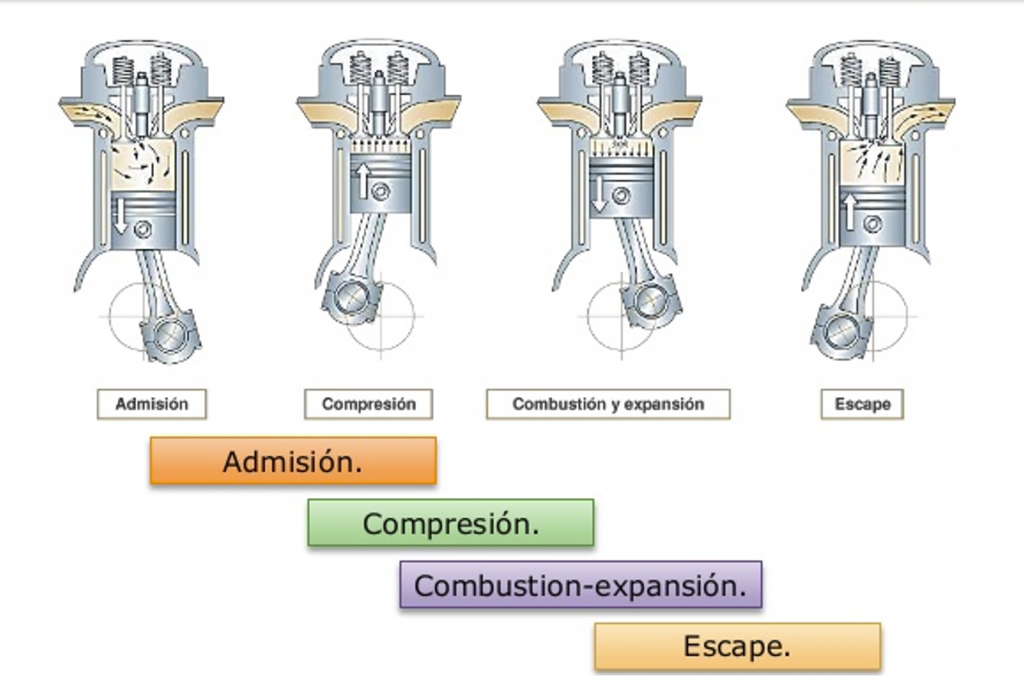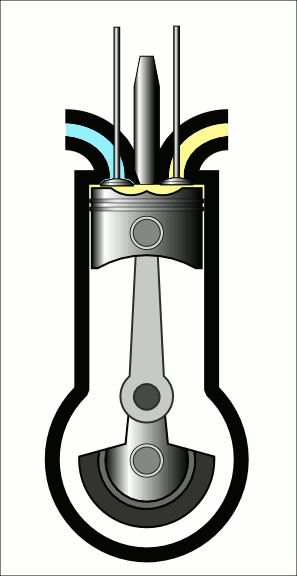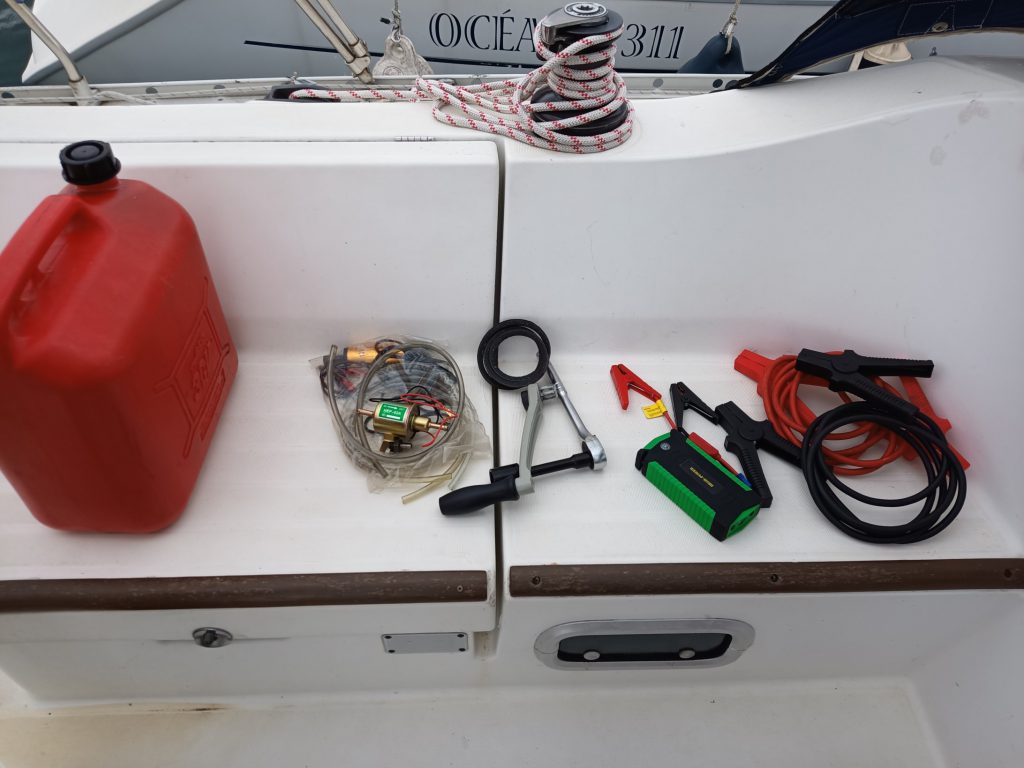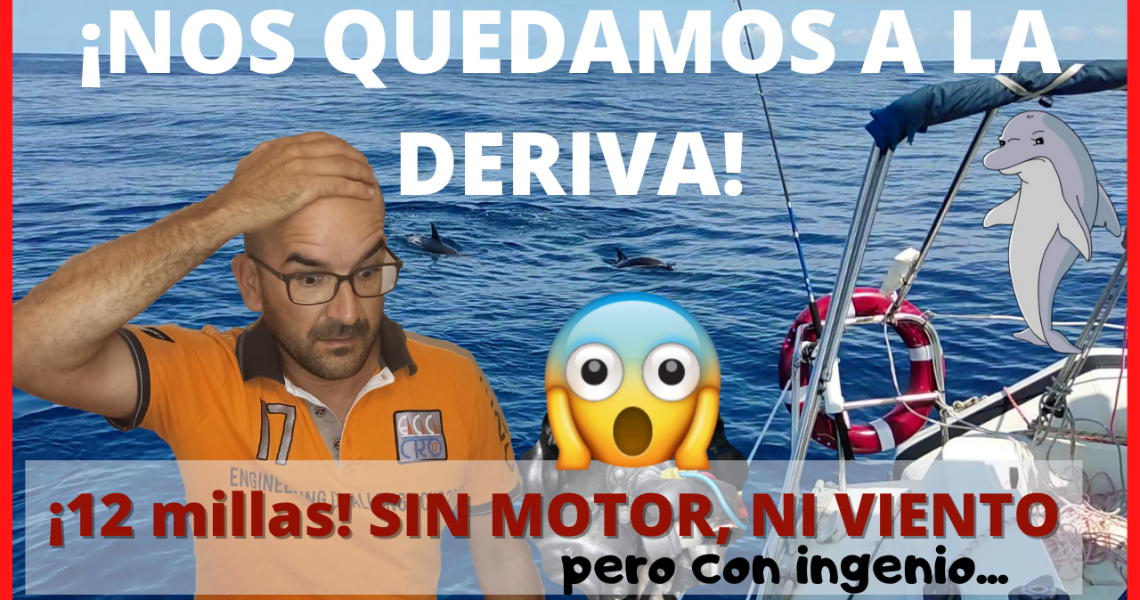What to do when your boat’s engine fails.
As a result of being stranded 12 miles out to sea, on a fishing day, due to an engine breakdown, it occurred to me that we should still dedicate a post to: how a boat engine works, the most common problems, and fortune solutions for any of those engine problems, which can happen to us when we least expect it.
From that day you have the complete video with the little odyssey we went through and a good description and demonstrations of some of these techniques.
In any case, I will briefly summarize my modest knowledge about engines and mechanics, which will surely be useful to you:
Internal combustion engines
We are not going to be too dense on the subject, but most of our boats are powered by one or more internal combustion engines.
An internal combustion engine is basically an engine that converts the longitudinal movement of one or more pistons into a circular movement that powers the propellers of our boats.
And the name of internal combustion is because, in turn, what makes those pistons move is the rapid combustion of a fuel in their combustion chambers.
And this, in a 4-stroke engine, which would be the most common in our boats today, is produced in a relatively simple way and thanks to one of the fundamental ingredients: Air, fuel, temperature and inertia, which are correctly organized in Each of the 4 strokes allows our usually reliable engines to take us wherever we want.
These famous 4-strokes, in a diesel engine, are what we could know as:

- Intake, which is where our air comes in, which fills the combustion chamber.
- Compression, which is when the air is compressed, generating in turn an increase in its temperature.
- Combustion, where the pulverized fuel is injected at high pressure and catches fire as a result of the accumulated heat, causing a combustion that produces a rapid expansion pushing the cylinder and generating the force that moves our engine.
- And finally exhaust, in which the rise, again, of the cylinder pushes the exhaust gases towards the outlet.

Temperature will be essential in the combustion phase, but then it will be generated in excess and will have to be regulated by cooling the engine.
And inertia, an element that sometimes goes unnoticed, inertia is responsible for the engine being able to go through all the phases in which power is not generated, which are basically all except combustion, although in multi-cylinder engines, the others cylinders also help.
Possible failures
Well, what can we do when the engine fails? Well, the first thing is to identify what the problem may be. Surely it will be produced by the absence or excess of any of these 4 factors.
- If our problem is that the engine does not turn to start, then surely what we lack is inertia, inertia, which is produced in abundance when the engine is running, but it must be generated from the outside to start the engine, and the starter motor is usually responsible for this.
- On rare occasions, in a marine engine, we can also face the absence of air, because the air filter is clogged, broken or the air inlet blocked by something, but this is not usually very common.
- The most common problem, and one that will be the most common source of breakdowns, is the lack of fuel. And there are many parts where the circuit can fail: from a dirty tank, a clogged pre-filter, clogged or broken pipes, a broken diesel pump, air in the circuit or, the most difficult thing to solve, a failure in the injectors or the pump. high pressure.
- Finally, we can have problems with the temperature, that the engine does not cool properly and the temperature alarm goes off and we are forced to stop it ourselves so that I do not know the flu, which would be a terrible and practically definitive death for the engine.
- The inventions
- In my boat I have a series of spare parts and inventions to deal with the most common problems.

✅ Our already known PowerBank with which I start the engine of the boat, or the car, and do many other things:
🔵 On AliExpress: https://s.click.aliexpress.com/e/_AlpVgF
🔵 On Amazon: https://amzn.to/3okB8G2
✅ Some essential starting cables and clamps in any boat or car:
🔵 On AliExpress: https://s.click.aliexpress.com/e/_9gpLDr
🔵 On Amazon: https://amzn.to/3kRMU8D
✅ An extra diesel fuel pump can get you out of a lot of trouble:
🔵 On AliExpress: https://s.click.aliexpress.com/e/_A3feW5
🔵 On Amazon: https://amzn.to/3oiXQ1h
✅ The pump that I use to transfer liquids between carafes and tanks, and that can even be used to bypass the refrigeration circuit in an emergency and catch sea water:
🔵 On AliExpress https://s.click.aliexpress.com/e/_Aks6m5
🔵 On Amazon https://amzn.to/3ulKIt6
✅ Extra carafe to carry reserve diesel:
🔵 On AliExpress from Spain https://s.click.aliexpress.com/e/_ADSu9F
🔵 On Amazon: https://amzn.to/3oiuK1T
✅ An electric outboard of those cheap ones, for when you go fishing and want to move very slowly or compensate for the current
🔵 On Amazon https://amzn.to/3onjAJl
Lack of inertia
In the first case, when we lack inertia, the problem will be clearly seen because we will not hear the starter motor turn or it will do so slowly. This is usually: Because we have run out of starter battery, in this case we could bridge it with the service battery using clamps, such as car ones, or we may even have a switch that unites them.
If all the batteries are dead, for example because they got wet with a guideway, or because we only had one, we can use our famous PowerBank to start the engine. Either, applying it with the tweezers on the battery that is exhausted .. Or directly on the starter motor, in case the fault is in the ignition button, or the ignition key or some similar site.
Although the starter motor itself could also fail, and if a few taps do not fix it, sometimes the brushes have simply been stuck. Well, many of these engines have an alternative to be started by hand, either by means of a specific crank or, if you do not have one, by turning the crankshaft plate directly, I have to say that this engine has started with four screws put on the crankshaft ring and a rope, not with little effort.
Shortness of air
A revision and disassembly of the air filter, and in an emergency starting the engine with the disassembled one will allow us to overcome this rare problem.
Overheating
With a cooling problem: the first thing to check would be that the engine spits copious water when it is running, through the exhaust, which would be a good sign. But if this does not happen, we will look: if the intake valve is open, if the cooling water filter has clogged, if the cooling pump fails, which is usually the most common failure and for which we should carry a replacement impeller or, ultimately, that there is some object or dirt clogging the seawater inlet. That we could always check and clean thanks to one of our mini scuba bottles.
But no, in our case, neither of those was the problem.
The fault was that no diesel reached the engine .. And that already required reviewing the entire circuit to see what was happening.
Lack of fuel
The first and most obvious thing is to check that we have fuel, and it is better to make sure, because the level indicator may not work well, so it is always highly recommended to carry a tank with reserve fuel. But if it is not that we have run out of fuel, it may be that the diesel filter is clogged, that there is air in the circuit and that we have to bleed it, that the diesel pump has broken, for which it would be very useful to have A replacement pump, even if it is like this electric one that I bought in AliExpress for 14 euros. Or, if not even diesel reaches the pump, then the problem may be in the pre-filter, which is usually already very close to the tank outlet, or, directly, dirt or the famous diesel mucus in the tank itself, such as it was our case.
If something fails and you cannot fix it on the fly, you can also, using your ingenuity, and with the help of the 20-liter Gasoil carafe, the electric pump, the power bank, and a few tubes and adapters, skip the main circuit and make you an alternative direct to the engine. A hose is connected to the pump, inserted into the bottle, the pump outlet directly to the filter and the diesel oil returns back to the bottle …
